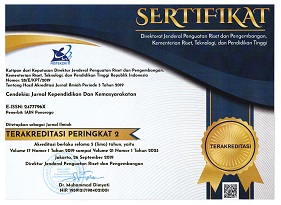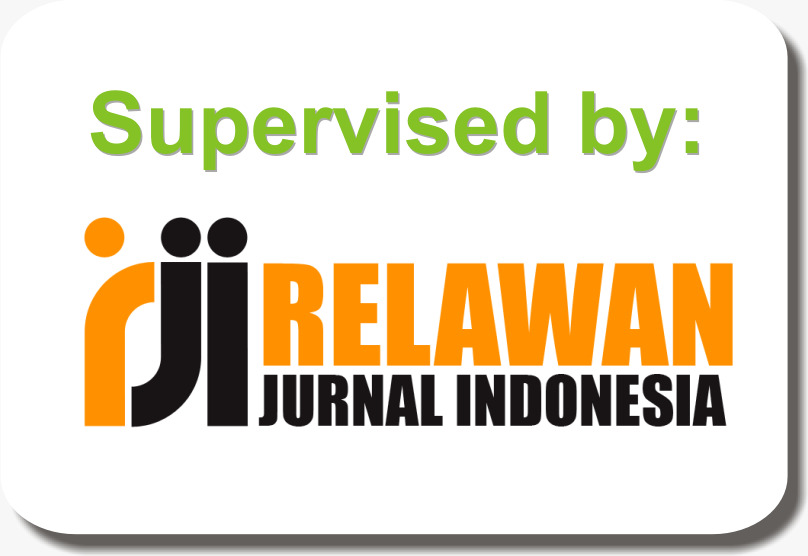The Educational Evaluation of Tahfizul Quran Program in Boarding School: Stake Model Perspective
DOI:
https://doi.org/10.21154/cendekia.v20i2.4932Keywords:
education evaluation, tahfiẓul quran, model stakeAbstract
This research aims to analyze the education evaluation of the Tahfizul Quran program's planning, implementation, and evaluation using the Stake model perspective in MBS Al-Hidayah Wonopringgo Pekalongan. This study also aims to analyze the obstacles in implementing the program. This research will provide academic contributions to evaluating the Tahfizul Quran program, especially in the MBS Al-Hidayah Wonopringgo Pekalongan. This qualitative study used a field research approach. The data were collected using observation, interview, and documentation techniques. They were analyzed using the Stake model, including contingency and congruence. The results of this research were (1) the planning evaluation of the program was well prepared; (2) The implementation of program evaluation according to the stage of the Stake model: inputs (antecedent), form asatiż/asatiżah met the criteria of the Tahfiẓul Quran graduate school and boarding school. In contrast, the criteria of a graduate’s Bachelor had not been fulfilled. The santri have not fully fulfilled the criteria to read the Qur'an. Aspects of the curriculum already meet the criteria of the Tahfiẓul Quran program but lack the allocation of study time. The process of learning (transaction) was implemented according to the plan. The result of learning outcomes reached the target of each class. (3) Evaluation of the program was conducted routinely at the end of the semester.
References
A. Rusdiana. Manajemen Evaluasi Program Pendidikan: Konsep, Prinsip, Dan Aplikasinya Di Sekolah/ Madrasah. Bandung: CV Pustaka Setia, 2017.
Arikunto, Suharsimi, and Cepi Safrudin Abdul Jabar. Evaluasi Program Pendidikan: Pedoman Teoritis Praktis Bagi Mahasiswa Dan Praktisi Pendidikan. Jakarta: Bumi Aksara, 2009.
Farid Wadji. “Tahfiz Al-Qur’an Dalam Kajian Ulum Al-Qur’an (Studi Atas Berbagai Metode Tahfiz).” UIN Syarif Hidayatullah Jakarta, 2010.
Ibrahim Anis, dkk. Al-Mu’jam Al-Wasit. Mesir: Dar al-Ma’arif, n.d.
Jody L. Fitzpatrick, James R. Sanders, and Baline R. Worthen. Program Evaluation: Alternative Approaches and Practical Guidelines. 3rd ed. Boston: Pearson Education Inc., 2011.
John M. Echols dan Hassan Shadily. An English ”“ Indonesian Dictionary. XXVI. Jakarta: Gramedia Pustaka Utama, 2005.
K.Lynch, Brian. Language Program Evaluation: Theory and Practice. Australia: Cambridge University Press, 1996.
Lexy J.Moleong. Metodologi Penelitian Kualitatif. 21st ed. Bandung: Remaja Rosda Karya, 2005.
Masruroh, Niken. “Evaluasi Program Tahfiz Al-Qur’an Di SMP Al Irsyad Al Islamiyyah Purwokerto.” IAIN Purwokerto, 2016.
Nanang Khosim and I’anatut Thoifah. “Pembelajaran Al-Qur’an Untuk Generasi Millenial Di Universitas Muhammadiyah Malang.” Al-Muaddib 2, no. 2 (2020): 165”“77.
Norman Edward Gronlund & Robert L. Linn. Measurement and Evaluation in Teaching. 6th ed. New York: Macmillan, 1990.
Robandi, Imam. Becoming the Winner: Riset, Menulis Ilmiah, Publikasi Ilmiah, Dan Presentasi. Yogyakarta: Andi, 2017.
Robert O. Brinkerhoff, et al. Program Evaluation: A Practitioner's Guide for Trainers and Educationer. 4th ed. Boston: Keluwer Nijboff, Publishing, 1983.
S.Hamid Hasan. Evaluasi Kurikulum. Bandung: Remaja Rosda Karya, 2014.
Sa’dulloh. 9 Cara Cepat Menghafal Alqur’an. Jakarta: Gema Insani, 2008.
Sholehatin, Rizqa. “Evaluasi Program Tahfiz Al-Quran Program Studi Kedokteran Universitas Muhammadiyah Yogyakarta.” Universitas Muhammadiyah Yogyakarta, 2018.
Sulton, Ahmad, Sangkot Sirait, and Mahmud Arif. “The Educational Philosophy of Traditional Pesantren Roudlotul Muhsinin Al-Maqbul: Integrating Future Education Values.” Cendekia: Jurnal Kependidikan Dan Kemasyarakatan 1, no. 1 (2022): 33”“48. https://doi.org/10.21154/cendekia.v1i1.3821.
Thoifah, Ianatut, Muhammad Yusuf, Muhammad Heriyudanta, Asyraf Isyraqi Jamil, and Dinil Abrar Sulthani. “Classification of Indonesian Students’ Ability to Read Al-Qur’an: The Role of Educational Institutions.” Cendekia: Jurnal Kependidikan Dan Kemasyarakatan 19, no. 2 (2021): 269”“89. https://doi.org/10.21154/cendekia.v19i2.3027.
Vo Thi Kim Anh. “Evaluation Models in Educational Program: Strengths and Weaknesses.” VNU Journal of Foreign Studies 34 (2018): 143.
Winkel WS. Psikologi Pengajaran. Yogyakarta: Media Abadi, 2007.
Zailani. “Evaluasi Program Tahfiz Al-Quran Dengan Menggunakan Model CIPP Pada Pondok Pesantren Raudhatul Amin Kandangan.” UIN Antasari, Banjarmasin, 2017.
Downloads
Published
Issue
Section
License
Copyright & License
Please find the rights and licenses in Cendekia: Jurnal Kependidikan dan Kemasyarakatan. By submitting the article/manuscript, the author(s) agree with this policy. No specific document sign-off is required.
1. License
The non-commercial use of the article will be governed by the Creative Commons Attribution license as currently displayed on the Creative Commons Attribution-NonCommercial 4.0 International License.
2. Author(s)' Warranties
The author warrants that the article is original, written by the stated author(s), has not been published before, contains no unlawful statements, does not infringe the rights of others, is subject to copyright that is vested exclusively in the author and free of any third party rights, and that any necessary written permissions to quote from other sources have been obtained by the author(s).
3. User/Public Rights
The spirit of Cendekia: Jurnal Kependidikan dan Kemasyarakatan is to disseminate articles published as free as possible. Under the Creative Commons license, Cendekia: Jurnal Kependidikan dan Kemasyarakatan permits users to copy, distribute, display, and perform the work for non-commercial purposes. Users will also need to attribute authors and Cendekia: Jurnal Kependidikan dan Kemasyarakatan on distributing works in the journal and other media of publications. Unless otherwise stated, the authors are public entities as soon as their articles got published.
4. Rights of Authors
Authors retain all their rights to the published works, such as (but not limited to) the following rights;
- Copyright and other proprietary rights relating to the article, such as patent rights,
- The right to use the substance of the article in own future works, including lectures and books,
- The right to reproduce the article for own purposes,
- The right to self-archive the article,
- The right to enter into separate, additional contractual arrangements for the non-exclusive distribution of the article's published version (e.g., post it to an institutional repository or publish it in a book), with an acknowledgment of its initial publication in this journal (Cendekia: Jurnal Kependidikan dan Kemasyarakatan).
5. Co-Authorship
If the article was jointly prepared by more than one author, any author submitting the manuscript warrants that he/she has been authorized by all co-authors to be agreed on this copyright and license notice (agreement) on their behalf and agrees to inform his/her co-authors of the terms of this policy. Cendekia: Jurnal Kependidikan dan Kemasyarakatan will not be held liable for anything arising due to the author(s) internal dispute. Cendekia: Jurnal Kependidikan dan Kemasyarakatan will only communicate with the corresponding author.
6. Royalties
Being an open accessed journal and disseminating articles for free under the Creative Commons license term mentioned, the author(s) are aware that Cendekia: Jurnal Kependidikan dan Kemasyarakatan entitles the author(s) to no royalties or other fees.
7. Miscellaneous
Cendekia: Jurnal Kependidikan dan Kemasyarakatan will publish the article (or have it published) in the journal if the article's editorial process is completed. The editors of Cendekia: Jurnal Kependidikan dan Kemasyarakatan may modify the paper to a style of punctuation, spelling, capitalization, referencing, and usage that deems appropriate. The author acknowledges that the article may be published so that it will be publicly accessible, and such access will be free of charge for the readers, as mentioned in point 3.

















